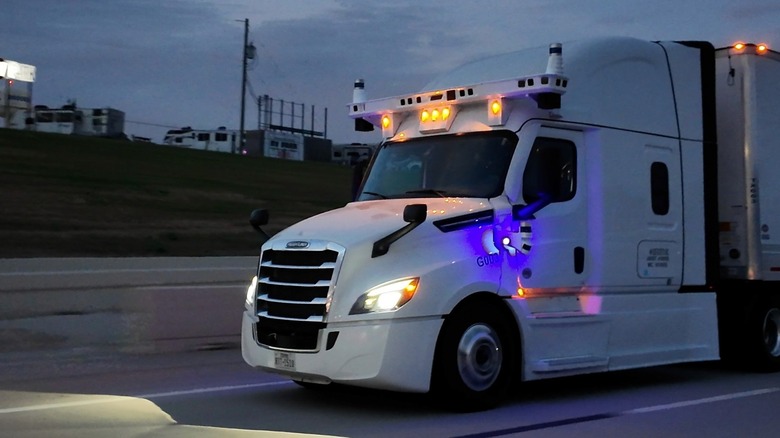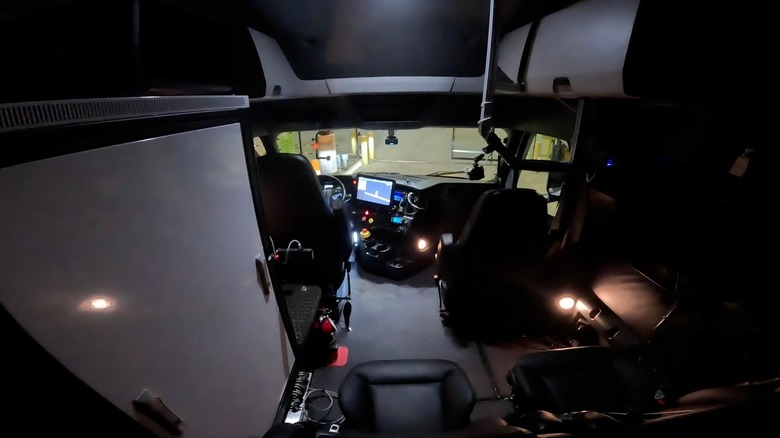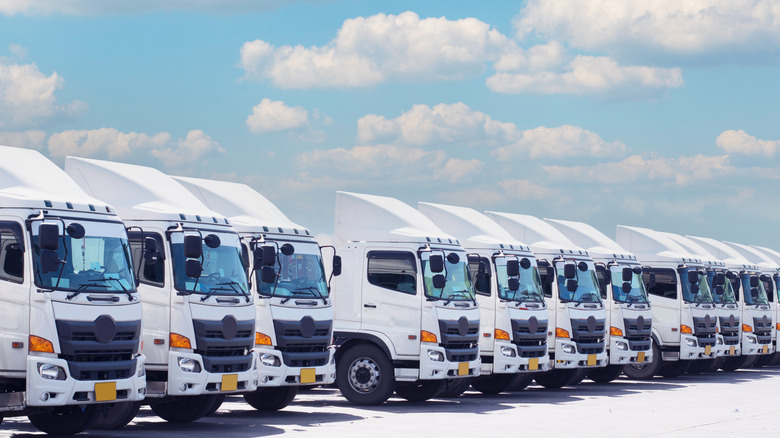Autonomous AI Trucking Technology Just Took A Big Leap Forward In Houston
Houston just became the proving ground for a development that many in the freight world have been waiting for: a completely driverless validation run. Bot Auto's autonomous trucking platform rolled onto the highway without a backup driver in the cab, and without a remote operator babysitting from afar. This wasn't a tightly staged stunt or a limited pilot — this was a real run, under real conditions, with the system fully in charge. That might not seem like much if you've been following the slow crawl of self-driving tests over the past decade, but it's a milestone that changes the conversation.
Traditionally, autonomous trucking companies have talked a big game while keeping a human in the loop. Even the most confident startups refused to let trucks operate without someone ready to grab the wheel. This validation run breaks that barrier. According to Bot Auto, the system managed lane merges, timed traffic interactions, and handled logistics timing end-to-end. For an industry that runs on thin margins and depends on reliability above all else, the fact that the truck didn't need a handoff at any point is more than symbolic — it's the first real proof that the technology can stand on its own.
Why this matters for the industry
Trucking is the backbone of supply chains in North America, and it's been under stress for years. The American Trucking Associations has estimated a driver shortage of tens of thousands, with retirements outpacing new entrants. Longer routes are harder to fill, delivery times get pushed, and the pressure trickles down to businesses and consumers alike. This is where autonomous AI trucking comes in as a possible lifeline.
The Houston test doesn't solve everything overnight, but it eliminates the main question mark hanging over the field: Can a truck actually operate without human supervision? Now that the answer is "yes," the conversation shifts to scalability. With AI handling the bulk of highway driving, the industry could see a reduction in accidents caused by fatigue, more predictable delivery schedules, and better fuel optimization through smarter routing. In short, efficiency gains at nearly every level.
It's also about labor flexibility. Driverless semis don't replace every human job outright, but they can take on the grueling long-haul legs that often keep new drivers away from the field. Humans could be shifted to regional and last-mile routes, where local knowledge and customer interaction hold a lot of importance. The test in Houston essentially shows that the technology can fill the gap no one wants: 600 miles of straight interstate at 2 a.m. This essentially brings in a shift in how the logistics workforce might be structured for the next decade.
What happens next
Of course, one successful run isn't the end of the story. Regulators aren't going to greenlight fleets of AI semis on every highway tomorrow. Safety agencies will want more data, in more conditions, across more routes. At the same time, logistics operators will run their own risk calculations. Sure, the cost savings are quite tempting, but trust doesn't come overnight when you're asking companies to put millions of dollars' worth of freight into a truck with no driver on board.
Still, the Houston breakthrough is a turning point. Up until now, autonomous trucking has been stuck in a kind of holding pattern — constantly "two years away." This is the first time a company has shown that the tech can truly hold its own. If Bot Auto and its rivals can keep showing the same results, the next step would be moving from one-off demos to actual freight work. That won't mean trucks suddenly running coast to coast. You'd probably just see early deployment along a few well-mapped freight lanes in the South or Southwest, where the climate is predictable and regulators are already engaged. From there, expansion would happen gradually, depending on how well the systems perform and how quickly industry partners buy in.
And the effects won't stop at shipping rates; insurance policies, highway planning, and even truck design could all shift once fleets start to include more AI-operated vehicles. Houston might have been the first proof point, but the significance of this run is likely to ripple well beyond Texas and into the entire freight industry.


